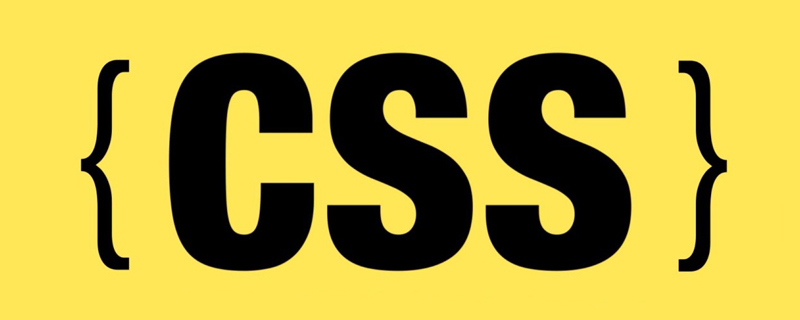1 Overview
1. What is CSS?
Cascading Style Sheet, a cascading style sheet, is used to set the display style of page content.
##Why use css and what are the advantages?
1: [Content] and [Performance] are separated. Only text information is stored in the HTML file, and the style part is placed in an independent style file. The page is more friendly to search engines. 2: Improve page browsing speed. The capacity of the page using CSS layout is much smaller than the page file capacity of TABLE layout. The former is generally only 1/2 the size of the latter. 3: Easy to maintain and revise. As long as you simply modify the corresponding CSS file, you can redesign the entire website page. 4: Using CSS layout is more in line with the current W3C standards. The W3C organization is a non-profit organization that formulates network standards. Standards such as HTML, CSS, and XML are customized by it.What are the ways to call CSS style sheets?
1. Internal style: Put the CSS style sheet in the document: The format is as follows:2. It is an element Add multiple styles
One element can define multiple classes at the same time, and separate different classes with spaces, such as class="xxx01 xxx02".
3. Add styles to child elements
How to set styles for child elements: parent element + space + child element {}, Usually id+class.
Two commonly used attributes
1. Text
text- align:center: The text is centered.
2. Inner patch
padding: Inner patch, that is, internal width. Format: padding: 5px (you can define one value or 4 values), used to set the distance between adjacent elements and their borders.
3. External patch
margin: Add margin between the object and other objects Reduce the white space. The increased spacing is outside the object, so it is called outer patch. The usage method is the same as inner patch padding.
4. Layout
overflow: Set the processing method when the content of the object exceeds the specified range.
auto: Use scroll bars or shear only when necessary.
hidden: Do not display content out of range.
visible: Default value, no cutting, no scroll bars.
scroll: Always display scroll bars.
# display: Change the display mode of the object.
inline-block: Treat the object as an inline object and its contents as a block object. Usually width is added to set the width of the object for alignment.
none: Hidden element, this element does not occupy space.
visibility:hidden: Hidden objects, hidden objects still occupy space.
The above is the detailed content of Summary of key CSS knowledge. For more information, please follow other related articles on the PHP Chinese website!
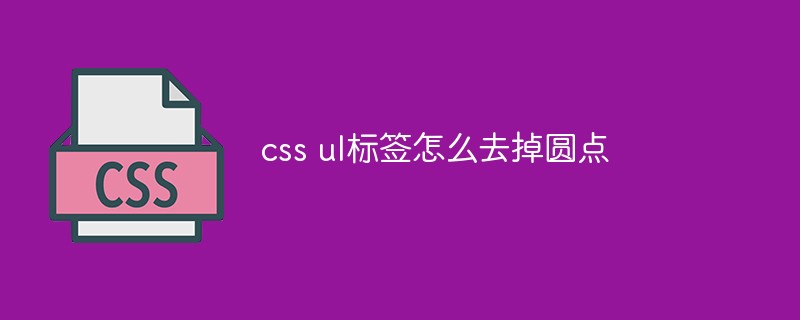 css ul标签怎么去掉圆点Apr 25, 2022 pm 05:55 PM
css ul标签怎么去掉圆点Apr 25, 2022 pm 05:55 PM在css中,可用list-style-type属性来去掉ul的圆点标记,语法为“ul{list-style-type:none}”;list-style-type属性可设置列表项标记的类型,当值为“none”可不定义标记,也可去除已有标记。
 css与xml的区别是什么Apr 24, 2022 am 11:21 AM
css与xml的区别是什么Apr 24, 2022 am 11:21 AM区别是:css是层叠样式表单,是将样式信息与网页内容分离的一种标记语言,主要用来设计网页的样式,还可以对网页各元素进行格式化;xml是可扩展标记语言,是一种数据存储语言,用于使用简单的标记描述数据,将文档分成许多部件并对这些部件加以标识。
 css3怎么实现鼠标隐藏效果Apr 27, 2022 pm 05:20 PM
css3怎么实现鼠标隐藏效果Apr 27, 2022 pm 05:20 PM在css中,可以利用cursor属性实现鼠标隐藏效果,该属性用于定义鼠标指针放在一个元素边界范围内时所用的光标形状,当属性值设置为none时,就可以实现鼠标隐藏效果,语法为“元素{cursor:none}”。
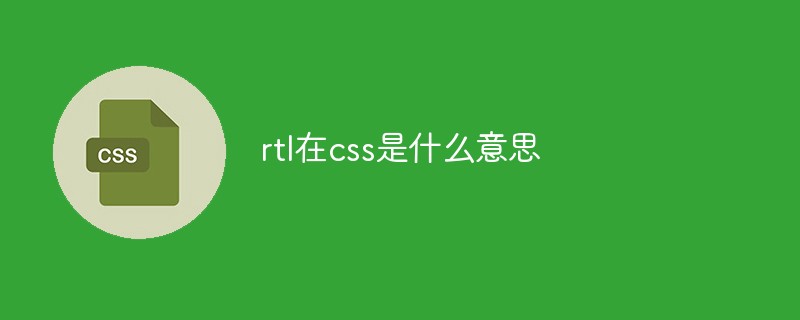 rtl在css是什么意思Apr 24, 2022 am 11:07 AM
rtl在css是什么意思Apr 24, 2022 am 11:07 AM在css中,rtl是“right-to-left”的缩写,是从右往左的意思,指的是内联内容从右往左依次排布,是direction属性的一个属性值;该属性规定了文本的方向和书写方向,语法为“元素{direction:rtl}”。
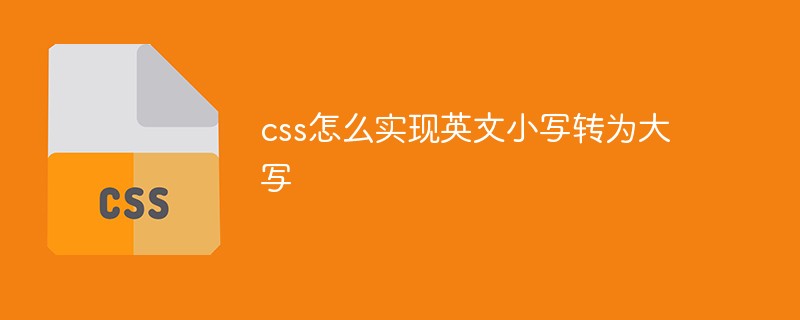 css怎么实现英文小写转为大写Apr 25, 2022 pm 06:35 PM
css怎么实现英文小写转为大写Apr 25, 2022 pm 06:35 PM转换方法:1、给英文元素添加“text-transform: uppercase;”样式,可将所有的英文字母都变成大写;2、给英文元素添加“text-transform:capitalize;”样式,可将英文文本中每个单词的首字母变为大写。
 css怎么设置i不是斜体Apr 20, 2022 am 10:36 AM
css怎么设置i不是斜体Apr 20, 2022 am 10:36 AM在css中,可以利用“font-style”属性设置i元素不是斜体样式,该属性用于指定文本的字体样式,当属性值设置为“normal”时,会显示元素的标准字体样式,语法为“i元素{font-style:normal}”。
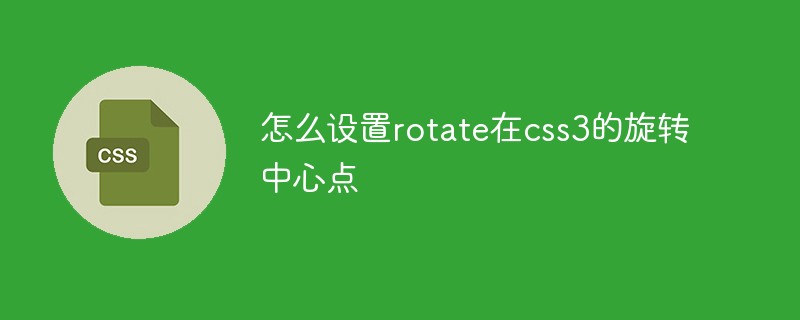 怎么设置rotate在css3的旋转中心点Apr 24, 2022 am 10:50 AM
怎么设置rotate在css3的旋转中心点Apr 24, 2022 am 10:50 AM在css3中,可以用“transform-origin”属性设置rotate的旋转中心点,该属性可更改转换元素的位置,第一个参数设置x轴的旋转位置,第二个参数设置y轴旋转位置,语法为“transform-origin:x轴位置 y轴位置”。


Hot AI Tools

Undresser.AI Undress
AI-powered app for creating realistic nude photos

AI Clothes Remover
Online AI tool for removing clothes from photos.

Undress AI Tool
Undress images for free

Clothoff.io
AI clothes remover

AI Hentai Generator
Generate AI Hentai for free.

Hot Article

Hot Tools

SublimeText3 English version
Recommended: Win version, supports code prompts!

Safe Exam Browser
Safe Exam Browser is a secure browser environment for taking online exams securely. This software turns any computer into a secure workstation. It controls access to any utility and prevents students from using unauthorized resources.

Zend Studio 13.0.1
Powerful PHP integrated development environment

DVWA
Damn Vulnerable Web App (DVWA) is a PHP/MySQL web application that is very vulnerable. Its main goals are to be an aid for security professionals to test their skills and tools in a legal environment, to help web developers better understand the process of securing web applications, and to help teachers/students teach/learn in a classroom environment Web application security. The goal of DVWA is to practice some of the most common web vulnerabilities through a simple and straightforward interface, with varying degrees of difficulty. Please note that this software

mPDF
mPDF is a PHP library that can generate PDF files from UTF-8 encoded HTML. The original author, Ian Back, wrote mPDF to output PDF files "on the fly" from his website and handle different languages. It is slower than original scripts like HTML2FPDF and produces larger files when using Unicode fonts, but supports CSS styles etc. and has a lot of enhancements. Supports almost all languages, including RTL (Arabic and Hebrew) and CJK (Chinese, Japanese and Korean). Supports nested block-level elements (such as P, DIV),






